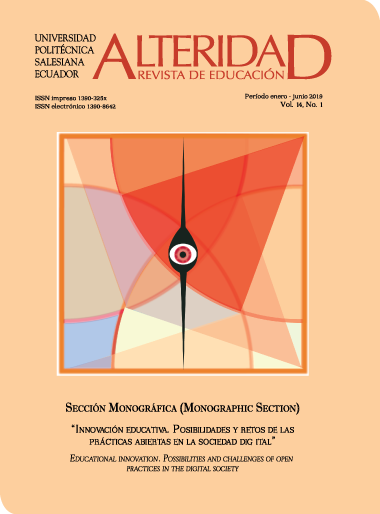Training needs of teachers of Intercultural Education Tsáchila
Main Article Content
Abstract
The current study helps to analyze the training needs and training processes in which the teachers who work in the Bilingual Intercultural Education schools are immersed: Madre Laura, Tsáchila, Tomás Rivadeneira, Conadu, Abraham Calazacón, Enrique Terán, Patricio Romero Barberis. These institutions are located in communities of the Tsáchila ethnic group in Santo Domingo de los Tsáchilas Province, Ecuador. The methodological proposal of the study was based on a non-experimental design based on qualitative and quantitative research to determine the training short comings of bilingual intercultural teachers and how this affects the educational processes and the execution of the Education System Model Guidelines Intercultural Bilingual (MOSEIB). The sample consisted of 19 Tsáchilas teachers and 10 mestizo teachers. The data collection and techniques analysis were the survey and the statistical analysis. The results of the research show that teachers of bilingual intercultural institutions present training and training needs that are affecting the educational process and the correct application of MOSEIB. In the discussion and conclusions, the importance of the teacher's initial and continuing education is explained and argued. In addition, emphasis is placed on the need to strengthen teaching competencies based on research and educational proposal adjusted to the needs of each educational context. From this, strengthen Intercultural Bilingual Education in Ecuador.
Article Details
Section
MISCELLANEOUS SECTION
Authorship: The list of authors signing must include only those people who have contributed intellectually to the development of the work. Collaboration in the collection of data is not, by itself, a sufficient criterion of authorship. "Alteridad" declines any responsibility for possible conflicts arising from the authorship of the works that are published.
Copyright: The Salesian Polytechnic University preserves the copyrights of the published articles, and favors and allows their reuse under the Creative Commons Attribution-NonCommercial-ShareAlike 3.0 Ecuador license. They may be copied, used, disseminated, transmitted and publicly displayed, provided that: i) the authorship and the original source of their publication (journal, editorial and work URL) are cited; (Ii) are not used for commercial purposes; Iii) mention the existence and specifications of this license.
Copyright: The Salesian Polytechnic University preserves the copyrights of the published articles, and favors and allows their reuse under the Creative Commons Attribution-NonCommercial-ShareAlike 3.0 Ecuador license. They may be copied, used, disseminated, transmitted and publicly displayed, provided that: i) the authorship and the original source of their publication (journal, editorial and work URL) are cited; (Ii) are not used for commercial purposes; Iii) mention the existence and specifications of this license.

